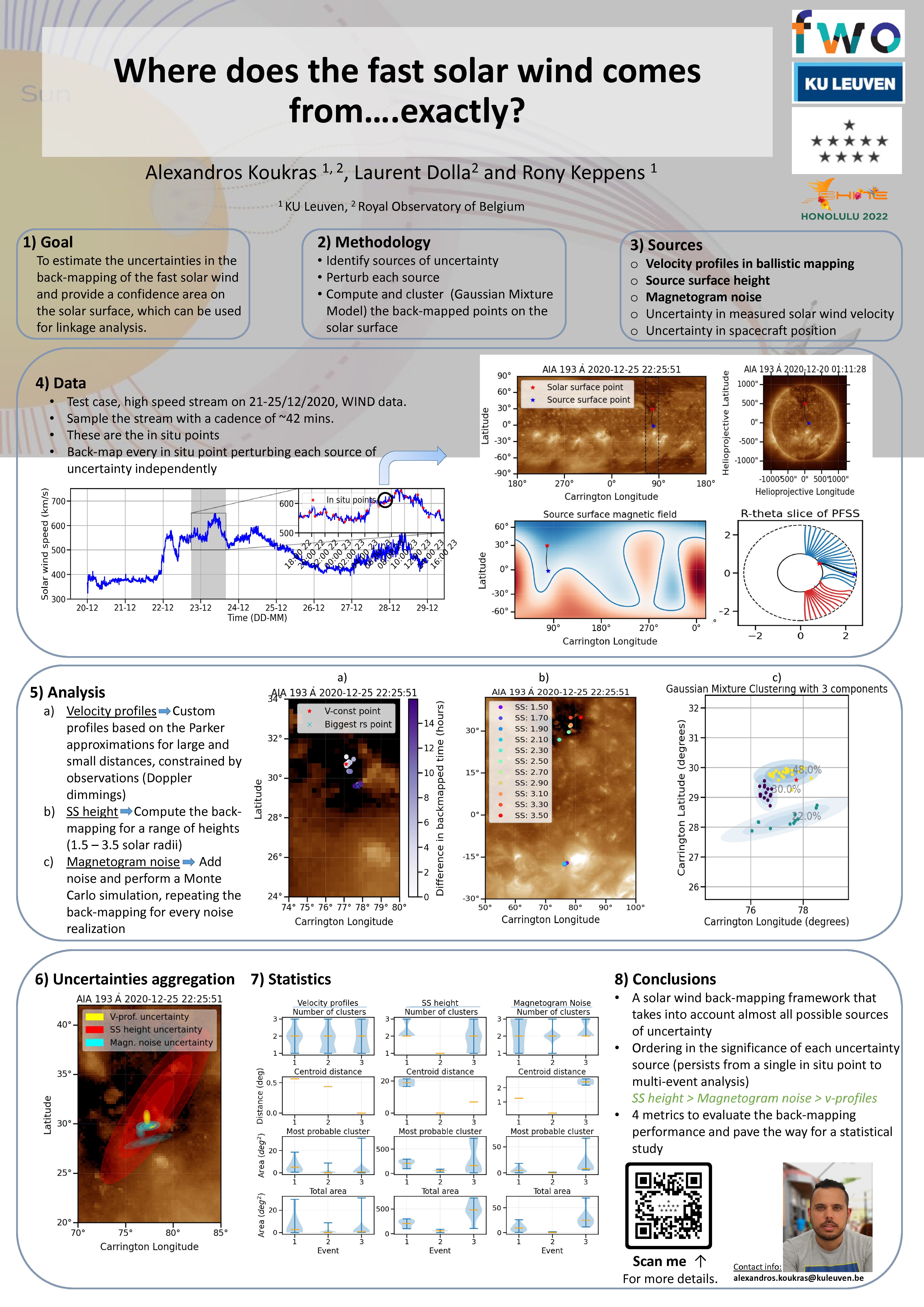Authors: Alexandros Koukras (KU Leuven, Royal Observatory of Belgium), Laurent Dolla (Royal Observatory of Belgium), Rony Keppens (KU Leuven)
Although the most likely source regions of fast solar wind relate to coronal holes, the exact acceleration mechanism that drives the fast solar wind is still not fully understood. An important approach that can improve our understanding is the combination of remote sensing and in situ measurements, which is often referred to as linkage analysis. This linkage tries to identify the source location of the in situ solar wind with a process called back-mapping. Typically, back-mapping is a combination of ballistic mapping, where the solar wind draws the magnetic field into the Parker Spiral at larger radial distances and magnetic mapping, where the solar wind follows the magnetic field line topology from the solar surface to a point in the corona where the solar wind starts to
expand radially.
By examining the different model ingredients that can affect the derived back-mapped position, we aim to provide a more
precise estimate of the source location and a measure of confidence in the mapping procedure. This can be used to improve the
connection of remote sensing with in situ measurements.
For the ballistic mapping we created velocity profiles based on Parker wind approximations. These profiles are constrained by observations of the fast solar wind close to the Sun and are used to examine the mapping uncertainty. The magnetic topology is derived with a potential field source surface extrapolation (PFSS), which takes as input a photospheric synoptic magnetogram. The
sensitivity of this extrapolated field is examined by adding reasonable noise levels to the input magnetogram and performing a Monte Carlo simulation, where for multiple noise realizations we calculate the source position of the solar wind. Next, the effect of free parameters, like the height of the source surface, is examined and statistical estimates are derived.
Lastly, we use a Gaussian Mixture clustering to provide an estimate of the uncertainty in the source location. Our uncertainty estimation is compared with that of an
available web-based community tool.
Our results show that the height of the source surface produces the biggest
uncertainty in the source region of the fast solar wind, followed by the noise in the input magnetogram and the choice of the
velocity profile. Lastly, we derive a confidence area on the solar surface that represents the
potential source region of the studied fast solar wind streams.


